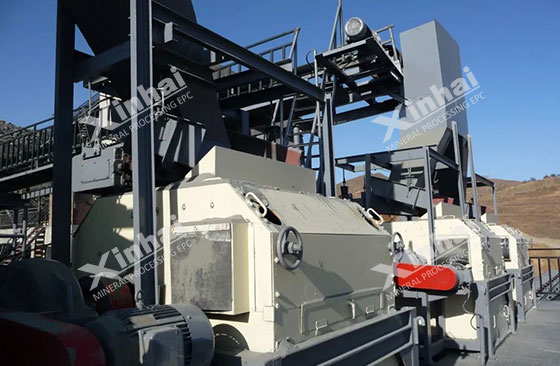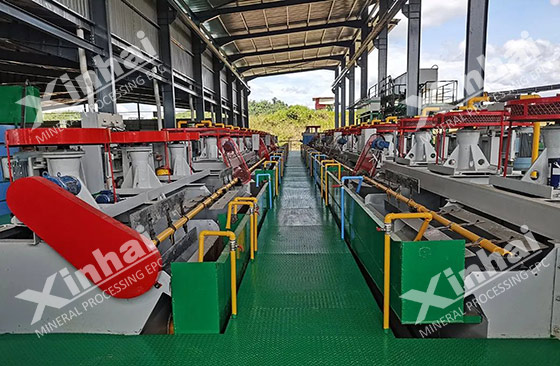
Quartz sand (silica sand) is a common non-metallic mineral raw material, widely used in industries such as construction, glass, ceramics and casting. These industries have a large demand for quartz sand, but have low requirements for raw material quality. High-quality quartz sand usually does not require or only requires slight purification to meet the demand. However, high-tech fields such as aerospace, atomic energy technology, laser, optical cable communication and military industry have higher requirements for quartz sand, which needs to undergo strict mineral processing and purification to produce high-purity or ultra-high-purity quartz sand. With the development of science and technology, the demand for silicon in high-tech fields has increased. Therefore, it is of great practical significance to improve quartz sand purification technology and promote low-cost and large-scale production of high-purity and ultra-high-purity quartz sand. The following will introduce common quartz sand beneficiation technologies, such as scrubbing, desludging, magnetic separation and flotation.
The SiO₂grade in quartz sand usually decreases as the particle size becomes finer, while the grade of impurity minerals such as iron and aluminum shows the opposite trend. This phenomenon is particularly obvious in quartz sand containing a large amount of clay minerals. Therefore, it is crucial to carry out washing, classification and desliming treatment of quartz sand raw ore before selection. These treatment steps can effectively remove clay minerals and other impurities, thereby significantly improving the purity of quartz sand and ensuring the quality of subsequent processing and applications.

Commonly used water washing equipment includes ore washers, spiral ore washers and drum ore washers, which can effectively remove soil and impurities from quartz sand. Classification equipment such as spiral classifiers and vibrating screens are used to separate ores of different particle sizes, thereby further improving the quality of quartz sand. Desliming equipment such as high-frequency screens and cyclones can remove clay minerals and fine argillaceous iron and improve the purity of quartz sand.
The scrubbing process can be divided into two methods: rod mill scrubbing and mechanical scrubbing. The effect of mechanical scrubbing is affected by the structural characteristics and configuration of the scrubbing machine. At the same time, process factors such as scrubbing time and scrubbing concentration are also important. Too high or too low scrubbing concentration will reduce the removal effect of impurity minerals and increase the difficulty of quartz sand purification. The scrubbing time should be based on the initial achievement of product quality requirements. Excessive scrubbing time will not only increase the wear and energy consumption of the equipment, but also lead to an increase in the cost of mineral processing and purification. Therefore, the scrubbing time should be reasonably controlled on the premise of ensuring the required product quality to optimize production efficiency and reduce operating costs.

Common scrubbing equipment includes rod mills, drum washers and spiral washers. Mechanical scrubbing equipment such as drum washers and spiral washers are widely used to remove surface impurities, but for some quartz sand ores, the effect may not be satisfactory. Therefore, the rod mill scrubbing process can be selected to improve the purity of quartz sand, especially for ores with poor mechanical scrubbing effects.
The magnetic separation process can effectively remove weakly magnetic impurity minerals such as hematite, limonite, biotite, etc., including conjoined particles, from quartz sand ore to improve the purity of quartz sand. Strong magnetic separation usually uses wet strong magnetic separators or high gradient magnetic separators. These devices can provide a strong magnetic field in a wet environment to ensure efficient separation of fine and micro particles, thereby further improving the quality of quartz sand. Wet strong magnetic separators can be used to remove weakly magnetic impurity minerals such as limonite, hematite and biotite, while weak magnetic separators or medium magnetic separators can remove strong magnetic minerals such as magnetite.

The flotation method can effectively remove non-magnetic associated impurity minerals such as feldspar and mica from quartz sand. For the separation of quartz and feldspar, cationic collectors and hydrofluoric acid activators are usually used in the acidic pH range. However, due to the potential harm to the environment from fluorinated wastewater, fluorine-free acid flotation can also achieve the separation of feldspar and quartz. This method achieves remarkable results by using sulfuric acid or hydrochloric acid to adjust the pH to about 2, combined with a mixed collector of higher aliphatic amine salts and sodium petroleum sulfonate.

The isoelectric points of mica and quartz are similar, making sorting more difficult. To overcome this challenge, anionic collectors can be used under acidic conditions, or mixed anionic and cationic collectors can be used under alkaline conditions. This method can effectively separate mica and quartz and achieve good sorting results.
In the beneficiation process of quartz sand, the comprehensive use of different processing technologies can significantly improve its purity and meet the needs of various applications. With the continuous advancement of technology, optimizing these mineral processing technologies and combining them with new processing methods will provide more efficient and economical solutions for the purification of quartz sand to meet the growing needs of high-tech applications.
To find out more about our products and solutions, please fill out the form below and one of our experts will get back to you shortly.